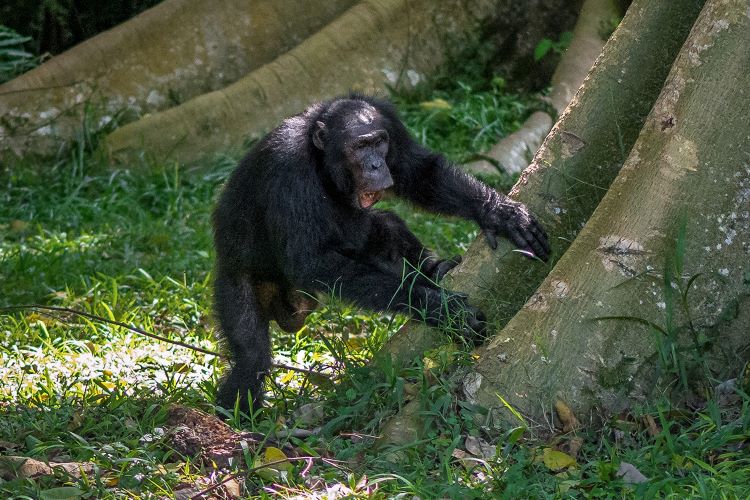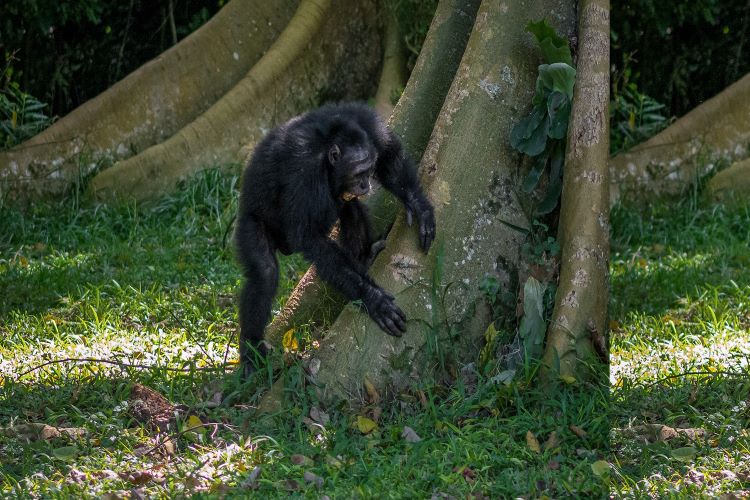Chimpanzee drum beats send social media messages across the jungle

Scientists from the University of St Andrews have shown that chimpanzees in Uganda’s Budongo Forest have their own signature style when drumming on trees.
Rainforest trees are supported by huge roots that form a large flat buttress. Chimpanzees take advantage of these roots to drum with their hands and feet, sending messages that carry over a kilometre through the dense humid forests.
The study, published today in Animal Behaviour, shows that male chimpanzees have their own signature rhythms – allowing them to send information that reveals who is where, and what they are doing.
Senior author, Dr Catherine Hobaiter, from the University’s School of Psychology, explained: “We could often recognise who was drumming when we heard them, and it was a fantastic way to find the different chimpanzees we were looking for – so if we could do it, we were sure they could too. It’s lovely to finally show how it works.”
Fascinatingly, not all drums appear to carry this signature – only those made while travelling – suggesting that the chimpanzees have control over whether to reveal their identity and location to others.
Dr Hobaiter added: “One thing that has always been a puzzle is why chimpanzees greet each other but very rarely seem to say goodbye. Our results might help to explain this – chimpanzees are rarely really out of contact, even when kilometres apart these long-distance signals allow them to keep in touch with who is where.
“It’s as though they have their own social media that allows them to check in through the day.”
Lead author, PhD student Vesta Eleuteri, said: “This really looks like chimp social media. Indeed, we also found that chimpanzees drum more often when they’re alone or in small groups. This means that they drum to know where others are and decide whether to join them or not.”
Research shows chimpanzees use different patterns of beats – some individuals have a regular rhythm like rock and blues drummers, and some have more syncopated or more variable rhythms like jazz. They combine these drums with long-distance calls, called pant-hoots, and different males also drum at different points in the call.

Ms Eleuteri added: “I was surprised that I was able to recognise who was drumming after just a few weeks in the forest. But their drumming rhythms are so distinctive that it’s easy to pick up on them. For example, Tristan – the John Bonham (Led Zeppelin) of the forest – makes very fast drums with many evenly separated beats. His drumming is so fast that you can barely see his hands!
“Ben, the alpha male, also has a peculiar style: he makes two closely following beats separated by one or two more distant beats.”
The research team, which also includes St Andrews PhD student Adrian Soldati, now plan to study group differences to check whether there are different drumming ‘cultures’ among the different chimpanzee populations.
Category Research